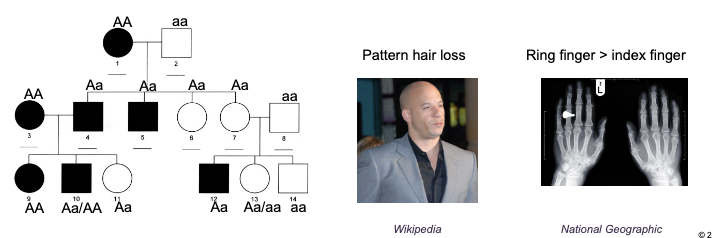Decoding genetic information
1/5
There's no tags or description
Looks like no tags are added yet.
Name | Mastery | Learn | Test | Matching | Spaced |
|---|
No study sessions yet.
6 Terms
What are mutations:
Changes in WHAT sequence (DNA and RNA)
Can be WHAT (WHAT) or not WHAT (WHAT)
Changes can be small (WHAT level) or large (WHAT)
Altered gene sequence can change the WHAT sequence of the polypeptide resulting in WHAT in the phenotypes
What are mutations:
Changes in NUCLEIC ACID sequence (DNA and RNA)
Can be INHERITED (GERMLINE) or not INHERITED (SOMATIC)
Changes can be small (GENE level) or large (CHROMOSOMAL)
Altered gene sequence can change the AMINO ACID sequence of the polypeptide resulting in VARIATION in the phenotypes

Effect on phenotypes can be
WHAT = WHAT
WHAT = WHAT
WHAT = WHAT
Effect on phenotypes can be
Harmless = neutral
Harmful = Deleterious
Beneficial = Advantageous

Spontaneous mutations are naturally-occurring mutations mainly caused by WHAT errors (1 mutation/1010 bp of DNA replicated) and spontaneous WHAT
Include WHAT removed A/G bases and WHAT (losing a group (cytosine to uracil))
Spontaneous mutations are naturally-occurring mutations mainly caused by REPLICATIONS errors (1 mutation/1010 bp of DNA replicated) and spontaneous LESIONS
Include DEPURINATION removed A/G bases and DEAMINATION (losing a group (cytosine to uracil))

Induced Mutations
Natural (environment) or artificial agents (mutagens) that cause mutations at a rate much higher than WHAT mutations
Induce mutations by replacing a WHAT, alter a base so it WHAT with another base, or WHAT a base where it can no longer pair with any base
Base analogs: mimic WHAT and incorporates into DNA (can cause mispairing during DNA replication); e.g. 5-bromouracil:thymine analog that can pair with A or G
Chemicals that alter base structure to cause WHAT (e.g. alkylating and intercalating agents-benzopyrene)
WHAT to bases (UV light-thymine dimers, aflatoxin B-apurinic sites)
Induced Mutations
Natural (environment) or artificial agents (mutagens) that cause mutations at a rate much higher than SPONTANEOUS mutations
Induce mutations by replacing a BASE, alter a base so it MISPAIRS with another base, or DAMAGE a base where it can no longer pair with any base
Base analogs: mimic BASES and incorporates into DNA (can cause mispairing during DNA replication); e.g. 5-bromouracil:thymine analog that can pair with A or G
Chemicals that alter base structure to cause MISPAIRING (e.g. alkylating and intercalating agents-benzopyrene)
DAMAGE to bases (UV light-thymine dimers, aflatoxin B-apurinic sites)

Germline mutation occur in WHAT, and therefore, are WHAT
Germline mutation occur in GAMETE FORMATION, and therefore, are HERITABLE
Example: sex-influenced trait – autosomal dominant trait
that is dependent on sex (males express the trait in
heterozygotes but females do not)

Somatic mutations:
Somatic mutations occurs in a WHAT cell (any cell that first experiences the mutation) and all sequential WHAT cells express the mutation
Somatic mutations are expressed as WHAT (size depends on time of mutation)
Cancer tumors are an example of somatic mutations
Somatic mutations:
Somatic mutations occurs in a PROGENITOR cell (any cell that first experiences the mutation) and all sequential DAUGHTER cells express the mutation
Somatic mutations are expressed as SECTORS (size depends on time of mutation)
Cancer tumors are an example of somatic mutations
